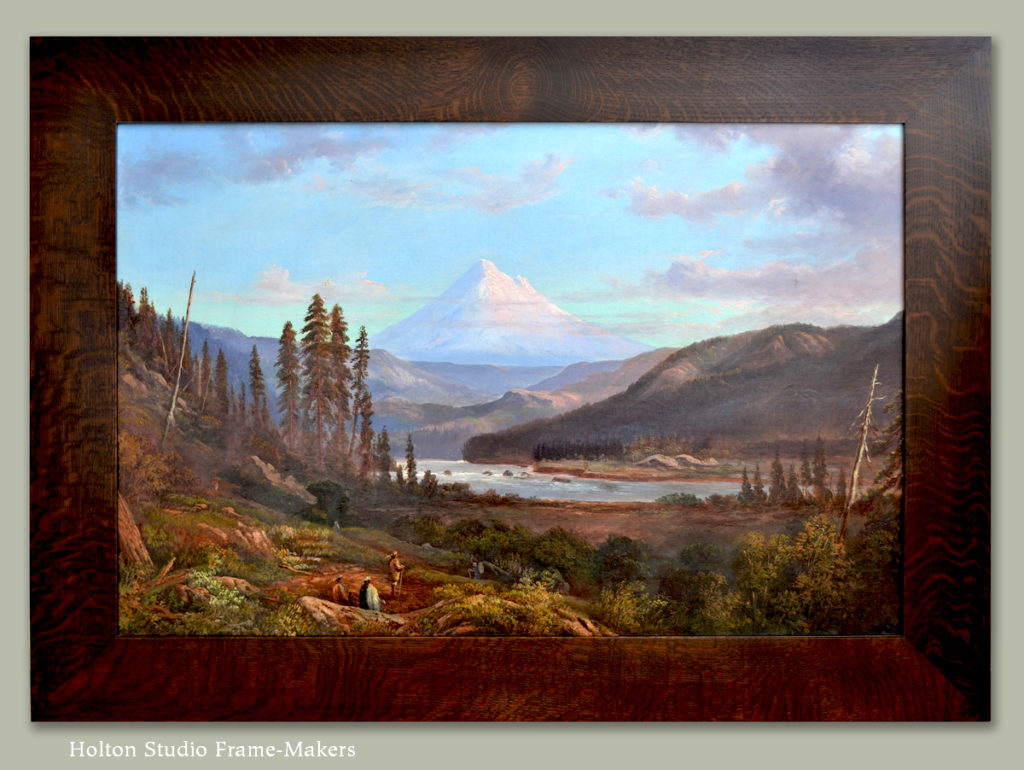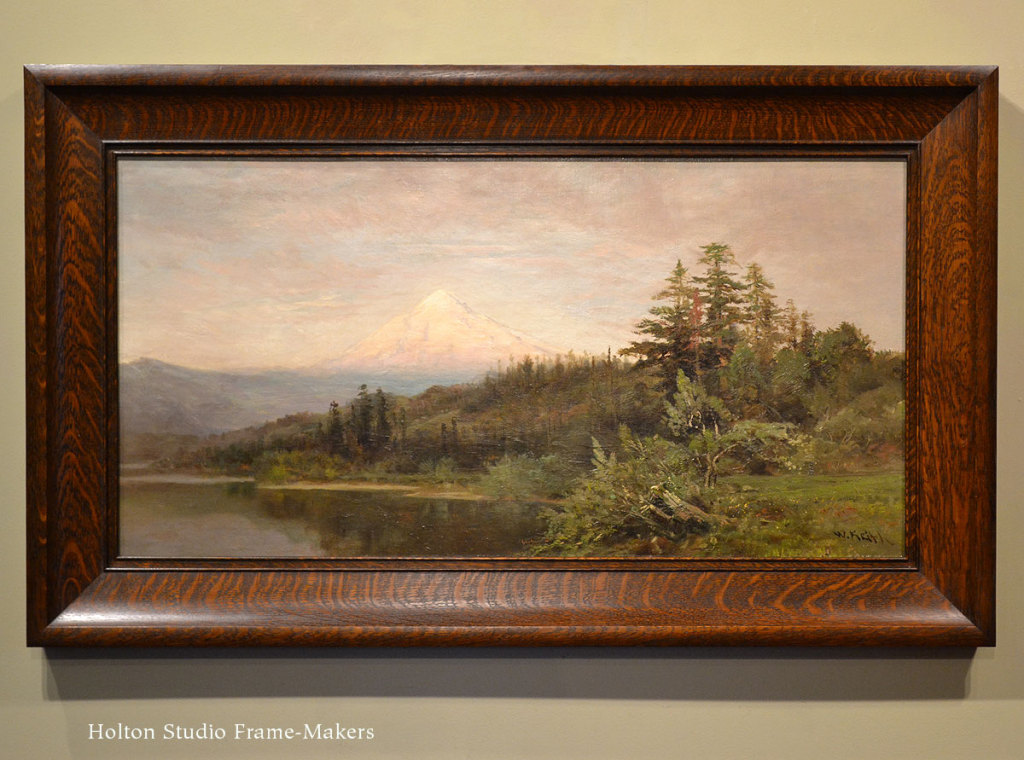My last post, here, showed a painting by William Keith (1838-1911) of Lagunitas Creek and Mount Tamalpais in Marin County. The picture, currently on view up the street at North Point Gallery as part of its show “Historical Artists of the East Bay, includes a quiet farmhouse and livestock, so the subject expressed in broader terms could be said to be a life of harmony between humankind and the land. It’s an ideal of the simple life and the simple home—an ideal articulated in a book by that name, The Simple Home, by a key early citizen of Berkeley, Charles Keeler (1871-1937). Addressed to the growing population of a developing town, Keeler’s vision of how we might live, sometimes described as utopian, appealed to the many immigrants to California who’d been displaced by, or were simply growing weary of, modern urban industrial life in Europe and in the eastern United States. There are a half dozen Keith paintings in the show, and another one that we framed, titled “Mt Hood from Sandy River,” (1869, 24″ x 36″), is shown below—another depiction of the sublime and awe-inspiring landscape of the far west. Its frame, the plainest possible mitered molding, which we call the No. 1, could well be described as a simple home for the picture.
Like the Keith painting “Sentinel Rock” which I blogged about here, this one includes Indians as well as a European. (In “Sentinel Rock,” the European is John Muir.) Key to the ideal of the simple home was the understanding that humanity, in its hubristic ambition to dominate nature, needed to return to a humbler regard for and relationship to the land—an aim toward which Native Americans offered example and guidance. It’s an ideal Keeler shared with his friends William Keith and John Muir (that’s the three of them in the photo at right). Keeler, like Muir, was a naturalist, but also loved architecture. Mentored by another key member of this circle, the famed architect Bernard Maybeck, Keeler advocated for homes conceived and built in harmony with the landscape, and with supreme respect for and careful use of natural materials, especially wood.
In this spirit we framed Keith’s early painting of Mt Hood in a setting even simpler than the beaded scoop molding used on the painting of Mt Tamalpais. The No. 1 is a flat mitered frame—this one’s 4″ wide (we make it in any width)—with no detail or embellishment whatsoever, at least on our part, but of course it’s richly embellished by nature herself with the the wild ray flake of quartersawn oak. (This counterpoint relationship between the wild figure of quartersawn oak and the plain, rectilinear lines of mission oak and craftsman furniture is a key aspect of its compelling and classic beauty, and a chief reason for its appeal to people aspiring to a renewed reverence for nature.) The frame is stained Medieval Oak, the burnt umber tone serving as a warm surrounding shadow to spotlight the painting and enhance the crucial element of sunlight—especially the sun shining on the distant mountain.
It’s a simple home for this beautiful painting by a great painter who settled on the hillside of Berkeley, hopeful, like his friends Charles Keeler and John Muir, of a new age of humankind restored to a right relation with the earth.
Below is another, much later (although the date’s unknown) William Keith painting of Mt Hood we framed (included in an earlier post, here). While the profile is more complex, it is still very simple—especially compared to the typical gilt exhibition and dealer frames of the time. (You can see it in the gilt frame it was in when it came to us on our page “Fixing a ‘Very Prevalent Error.”) Most importantly, in terms of the visual effect of the frame, the frame profile is subordinated to the inherent beauty of the wood—a principle of design we adhere to in all of our frames, and a principle true to the ideal expressed by this wonderful painter and his friends of a restored and revived relationship of people to the land and nature.
In truth, we frame every picture in this timeless spirit, and think of every frame we make as a simple home for the picture it serves.
« Back to Blog

